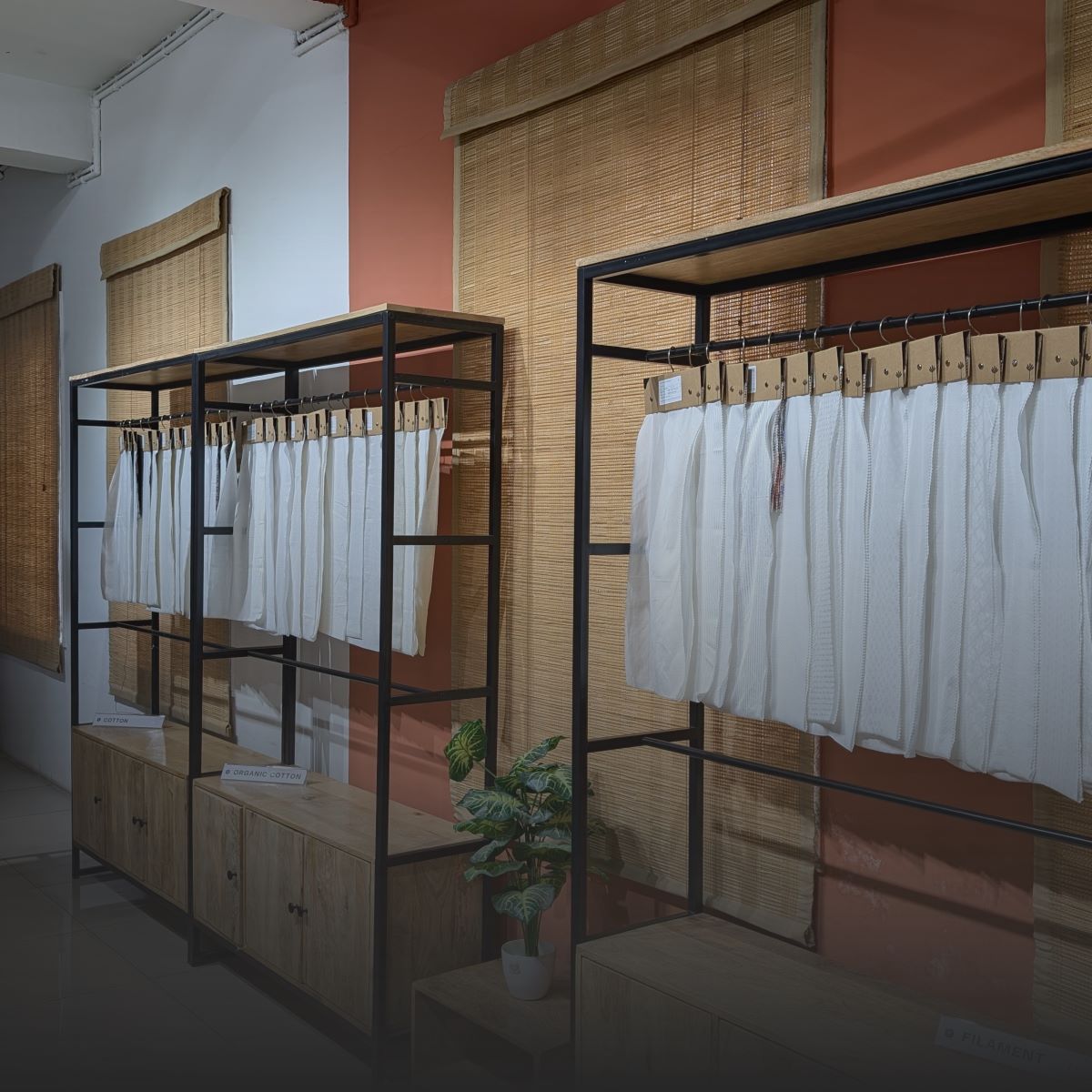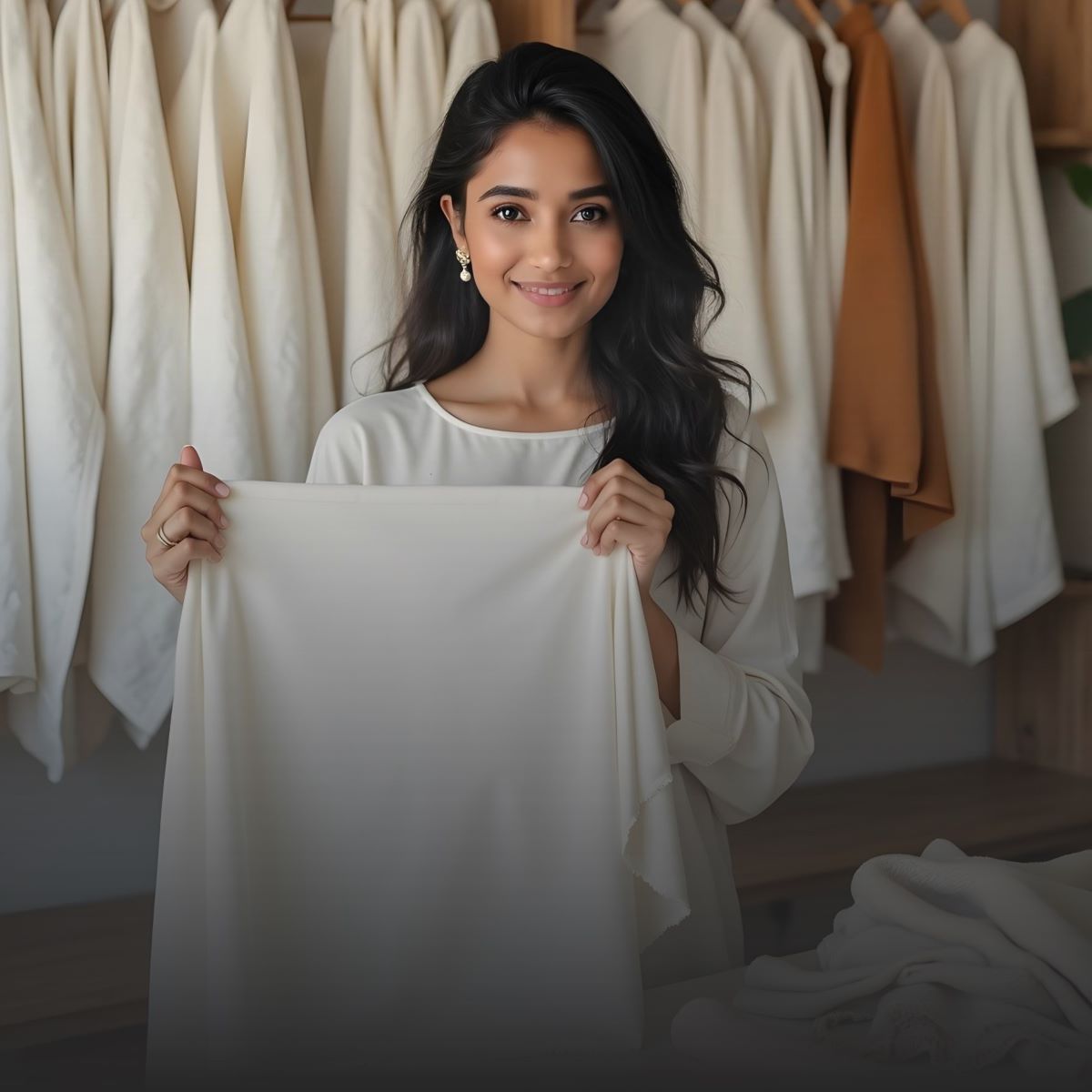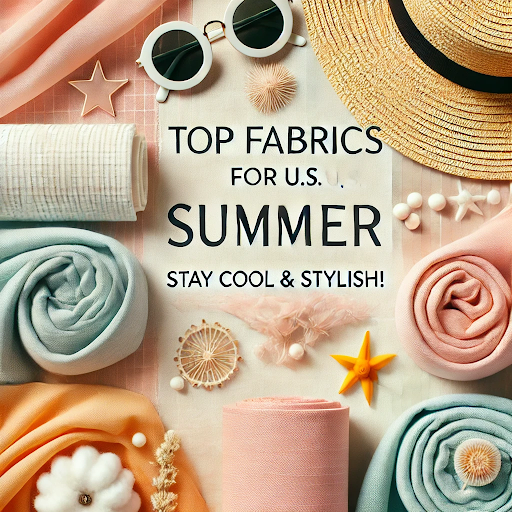Did you know that August 2024 was one of the hottest months in the U.S.? With high temperatures hitting the West, South and East Coast, staying cool isn’t just about turning on the AC. It’s also about wearing the right fabrics.
Wearing the wrong fabric when it’s hot can make you feel sweaty and uncomfortable. But the right fabrics? They let air flow, absorb sweat and keep you cool all day.
So, what fabrics should you wear this summer? From light cotton fabric to moisture wicking linen and soft micromodal, we’re sharing the best fabrics to help you stay cool and stylish, even when it’s really hot outside.
Why Fabric Choice Matters in Summer
When it’s hot and sticky outside, the fabric you wear can make a big difference in how comfortable you feel. Fabrics that let air flow, absorb sweat and help keep your body temperature in check are key for summer clothes. If fabrics are too thick or don’t breathe well, they can trap heat and moisture, making you feel too hot and uncomfortable. Picking the right fabrics helps you stay cool, fresh and stylish all summer long.
Top Fabrics for U.S. Summer Fashion
Here are some of the best fabrics that will help you stay cool and stylish in the summer heat:
1. Linen: The Breathable Fabric You’ll Want All Summer
Why it’s great for hot weather: Linen fabric is very light and lets air flow through, making it one of the best fabrics for summer. It naturally absorbs sweat, keeping you dry and cool. Plus, it helps air move around, which is perfect for hot and humid weather.
Best use cases: Linen is great for casual wear, work clothes and even summer events. Linen shirts, pants, dresses and skirts are all cool and stylish choices for hot days. It's a flexible fabric that works for both casual and more formal looks.
Care instructions: Linen can wrinkle easily, so it’s best to wash it by hand or on a gentle cycle with cold water in the machine. When ironing, use a medium or low heat setting, not high. The best way to keep linen in shape is by air drying it.
Sustainability factor: Linen is good for the environment because it's made from flax, which needs less water and fewer chemicals than cotton. It breaks down naturally and uses less energy to make, so it’s a great eco friendly choice.
2. Rayon: Lightweight Comfort with a Touch of Luxury
Why it’s great for hot weather: Rayon fabric is made from natural plant fibers, making it light and breathable. It feels smooth and cool on your skin, helping to keep sweat away, which is great for humid weather. Rayon also falls nicely, giving you an elegant, airy look that's perfect for summer.
Best use cases: Rayon is great for dresses, skirts, blouses and light pants. Whether you're dressing casually for the day or getting more formal for the evening, rayon gives you both comfort and style for any occasion.
Care instructions: Rayon can shrink, so it's best to wash it by hand in cold water or on a delicate cycle in the machine. Don't wring it out and hang it to dry. When ironing, use a low heat to keep it smooth.
Sustainability factor: Rayon comes from wood pulp, so it’s a semi-synthetic fabric. While it's not as eco friendly as completely natural fibers, some types of rayon, like Tencel, are made in more sustainable ways, using less water and fewer chemicals.
3. Chambray: The Summer Staple for Casual Cool
Why it’s great for hot weather: Chambray fabric is often mistaken for denim, but it's lighter and more breathable. Made from cotton, it gives you the same relaxed look without being heavy. It's soft and lets air flow, making it perfect for summer.
Best use cases: Chambray is great for casual wear, like chambray shirts, shorts, and dresses. You can also dress it up with accessories for a chic, relaxed office look.
Care instructions: You can machine wash chambray in cold water and dry it on low heat. To keep it soft, avoid using high heat in the dryer and iron it on medium heat.
Sustainability factor: Chambray is made from cotton, which is a natural fabric. If grown organically, it can be more eco friendly than synthetic fabrics. Look for organic chambray to be kinder to the environment.
4. Silk: Hypoallergenic Summer Wear

Why it’s great for hot weather: Silk may seem fancy, but it's surprisingly breathable and helps wick away moisture. Its natural fibers let air flow, keeping you cool and comfortable. Silk is also gentle on sensitive skin, which is especially nice in the summer.
Best use cases: Silk works for both casual and formal wear. Think of elegant silk blouses, flowing dresses and stylish summer scarves. Silk dresses and skirts are perfect for both daytime and evening events.
Care instructions: Silk needs gentle care to keep it shiny and smooth. Hand wash it in cold water or dry clean. Iron it on the lowest heat and use a cloth to protect the fabric from direct contact.
Sustainability factor: Silk fabric is a natural fabric but making it can impact the environment. Choose ethical or organic silk to help support more eco friendly practices.
5. Chiffon: Lightweight and Breezy for Formal Occasions

Why it’s great for hot weather: Chiffon fabric is a light, see through fabric that feels elegant and airy. It lets air flow and doesn’t stick to your body, making it perfect for hot and humid weather. Its breathable nature makes it a favorite for summer outfits.
Best use cases: Chiffon is often used for formal events like summer weddings or evening parties. It’s great for making flowy dresses, skirts and blouses. You can also layer chiffon over light fabrics for a breezy, layered look.
Care instructions: Chiffon should be hand washed or machine washed on a delicate cycle. Iron it on low heat or use steam to remove wrinkles. For more delicate chiffon items, dry cleaning is best.
Sustainability factor: Silk chiffon is more eco friendly because it’s biodegradable. Polyester chiffon, on the other hand, is less environmentally friendly because it’s made from synthetic fibers.
6. Georgette: Summer Elegance That Moves with You
Why it’s great for hot weather: Georgette fabric is a light, see through fabric with a slightly crinkled texture. It’s breathable and airy, making it perfect for humid weather. While a bit heavier than chiffon, georgette still allows good airflow and keeps you comfortable.

Best use cases: Georgette is great for making layered, elegant pieces like blouses, dresses and skirts. It works well for both casual and evening wear, giving a stylish yet breathable option.
Care instructions: Georgette should be dry cleaned to keep its shape and texture. If washing in a machine, use a delicate cycle and don’t wring it out. Iron on low heat or use a steamer to remove wrinkles.
Sustainability factor: Georgette made from silk or natural fibers is more eco friendly. Synthetic georgette, however, is less sustainable and may not break down easily in the environment.
7. Crepe: Comfortable, Chic and Breathable

Why it’s great for hot weather: Crepe is a light fabric with a slightly textured surface, giving your outfits extra depth. It’s breathable, drapes nicely and doesn’t stick to your skin, making it perfect for summer.
Best use cases: Crepe is great for both casual and dressy occasions. You can wear crepe blouses, skirts or dresses for a stylish and comfortable look, whether you’re at a summer party or the office.
Care instructions: Crepe can be machine washed in cold water or dry cleaned. Iron it on low heat to keep its smooth texture.
Sustainability factor: Crepe fabric made from natural fibers like wool, cotton or silk is more eco-friendly than synthetic options. Look for organic choices to reduce your environmental impact.
8. Micromodal: The Ultimate Sustainable Summer Fabric

Why it’s great for hot weather: Micromodal is a super soft, breathable fabric that’s perfect for hot weather. Made from beechwood pulp, it helps wick away sweat and keeps your body cool. It’s light, smooth and feels cool against your skin, making it great for relaxing or everyday wear.
Best use cases: Micromodal is great for loungewear, activewear and casual clothes. It’s often used for T-shirts, dresses and leggings, offering comfort and stretch for easy movement.
Care instructions: Micromodal should be machine washed in cold water and tumble dried on low heat. Avoid high heat, as it can damage the fabric’s soft feel.
Sustainability factor: Micromodal is eco friendly because it’s made from renewable beechwood and produced in an environmentally friendly way. It’s biodegradable and uses less water than cotton.
Fabrics to Avoid in Hot and Humid Weather
Some fabrics are not good for hot and humid weather because they can make you feel too hot and uncomfortable. Here are fabrics to avoid:
-
Polyester: Polyester fabric traps heat and sweat against your skin, making it uncomfortable in the heat. It doesn’t let air flow, so it’s not good for humid weather.
-
Nylon: Nylon also doesn’t let air move through, which can make you overheat. It traps sweat, leaving you feeling sticky.
-
Velvet: Velvet looks fancy but it’s heavy and keeps heat close to your body. It doesn’t allow air to flow, so it can make you feel too hot.
- Acrylic: Acrylic doesn’t breathe well, so it can make you feel too warm in hot weather. It’s best to skip acrylic clothes in the summer.
Conclusion
Choosing the right fabric for hot and humid weather is important for staying cool, comfortable and looking good. Linen, rayon and cotton are great choices because they let air flow and absorb sweat, keeping you fresh all day. Sustainable fabrics like organic linen and micromodal are good for comfort and also help protect the environment. Avoid fabrics like polyester, nylon and velvet because they trap heat and moisture. By picking the right fabric, you can enjoy summer in style without giving up comfort.




